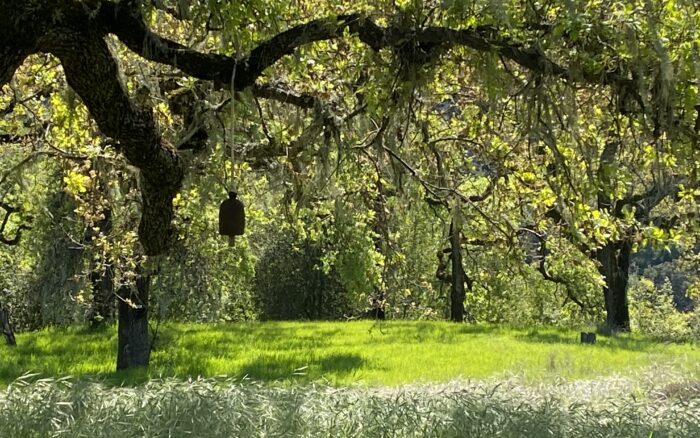We have been through emergencies before: floods, the earthquakes of 1989 and 2014; the devastating fires of recent years which burned whole towns, shrouding us in smoke for weeks. Now each late summer and fall we live with days of no electrical power as PG&E proactively turns off major power lines to avoid another fiery catastrophe.
But the Covid 19 pandemic is different. There is no literal shaking of the earth, nor flames, nor smoke. We have electrical power. Things seem almost normal. There is only the unseen threat so minuscule we only know its impact. This virus is so new that none of us on the planet has immunity to it. 80% who catch it will survive, but 20% of us, once thought to be mainly the elderly and physically vulnerable, will not do well and require hospitalization for fluids, oxygen, and ventilators. 50% of those on ventilators will die.
As mandated by Governor Newsom, we shelter-in-place, Donald and I fortunate enough to live on a ranch that offers a mile of social distance. The meetings which I still attend, I attend on-line. I am reassured to see my colleagues’ and friends’ faces. But it’s spring, and I am also happy to spend my days sequestered, walking the trails through the searing beauty of fresh leaves and of stretches of painfully green grass. I try not to avert my eyes: such beauty has always had that effect on me, perhaps because “… beauty is nothing but the beginning of terror which we are barely able to endure…”(Rainer Maria Rilke, Duino Elegies).
Have beauty and terror always been paired? For me, beauty opens the door to the eternal, paradoxically reminding me of carnality, temporality, and death. The predictions and worse case scenarios of this pandemic seem incongruent with the stunning verity of nature’s first green, of her tassels of beaded blooms on coastal oak, of the trills of bird courtship. Nothing is different here, or is it? The question lives in me like a melody that won’t let up. This is the spring I have known on this ranch for 26 years; in this life, for 71. Yet I can’t help thinking, is this the last time I will witness this rite of life as expressed in green?
The virus appears to be good for the planet herself. We hear that the atmosphere over China has cleared and that the CO2 over hard-hit New York City, reduced by as much as 25%. The canals in Venice, Italy, are clear again. You can see to the bottom. Our industrial-driven lifestyle has had devastating impacts on the natural world. The fact that Earth can begin to restore herself so quickly is a huge relief. Let’s not rush back to air travel and cruise ships and driving and driving and driving. Do we need more proof of what it all is doing to our planet?
Living within what feels like a bubble of safety here, I receive reports online. Three cases of Covid 19 in Napa County now. There will be more. We are told that the shelter-in-place mandate in California may already be “flattening the curve”, giving time for our hospitals and healthcare systems to come up to speed to treat this pandemic. If we don’t do this, the governor predicts 55% of Californians will be infected.
Yet four-fifths of the country are not sheltering-in-place. Our president says that it’s almost time to go back to normal activity, despite all warnings from the Center for Disease Control and those who understand pandemics.
We are in a time of becoming conscious that what we do not only affects us but everyone else. It is the big lesson of this era that we have entered, and, this round, the virus is the teacher. As Dr. Emily Landon stated in an Illinois governor’s press conference, unless we sequester, “the strong and healthy will doom the vulnerable” (press release). Unless we act for the common good, we all will go down. It won’t matter what the economy is. It’s a shift, for sure, into what Thomas Berry called the Ecozoic Era and “the new story”, that evolution of consciousness that humans are interrelated with everything, human and nonhuman. Our consciousness of this fact and the necessary ethical commitment to it are not only evolutionary but also critical to human survival on our planet. Earth will recover, one way or the other.
